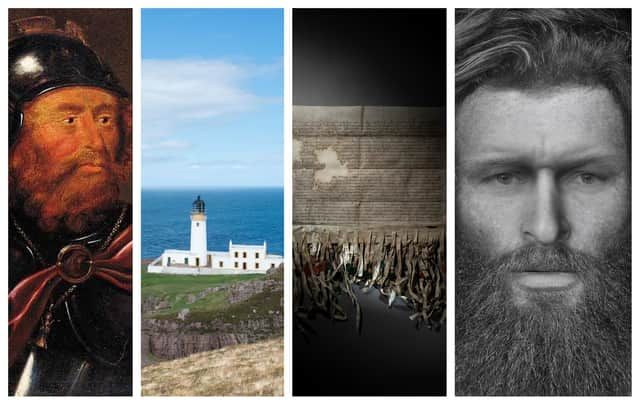4 myths from Scottish history debunked


Why do we continue to tell stories about castles or medieval documents or even monsters, which we know cannot be true? At their root myths are stories – and people really like stories.
They help us to make sense of the world and our place in it. By its very nature the past is something we can’t know everything about, and therefore we are constantly trying to fill in the blanks.
Advertisement
Hide AdAdvertisement
Hide AdHistorical myths often arise from trying to make sense of the past, and as they continue to be retold they can become the dominant narrative. In other cases, myths can also be used to reframe a historical event to better fit present beliefs.
Sometimes myths can even replace details of history we do know, because they are a better or more fitting story.
Here we look at four myths from Scottish history – and ask if they really could be true.
Did the Declaration of Arbroath directly inspired the American Declaration of Independence ?
Not really true. This example is one that is so widespread it has been enshrined into law.
In 1998 a resolution was passed in America declaring each 6 April National Tartan Day, a celebration of Scottish heritage in America. This date comes from the Declaration of Arbroath, a medieval document that famously appears to put limits on the sovereignty of the king.
Republican Senator Trent Lott, who was largely responsible for its introduction, said
By honouring April 6, Americans will annually celebrate the true beginning of the quest for liberty and freedom… Arbroath and the declaration for liberty.”
Advertisement
Hide AdAdvertisement
Hide AdLott was referencing the myth that the American Declaration of Independence was directly inspired by the Declaration of Arbroath. A number of scholars devoted extensive time to disproving this, including Euan Hague in National Tartan Day: Rewriting history in the United States.
He examined the sources used by the compilers of the Declaration of Independence, as well as records of their personal libraries, and concluded,
the Declaration of Arbroath is conspicuous only by its total absence.”
So where does the myth come from? It appears to be relatively new. The earliest mention I have found is from 1975, when it is mentioned in an American Scottish Clan Society’s members magazine.
Since then it has been mentioned in a number of places on both sides of the Atlantic from Westminster to an American late-night television show Late Late Show with Craig Ferguson. It’s in popular history books, and in the Resolution for Tartan Day.
I have previously suggested that this may come down to an issue of naming. From about 1800 until relatively recently the Declaration of Arbroath was often called the Scottish Declaration of Independence. Thus, the two perhaps became conflated in people’s minds.
Of course, as will all myths there is an element of truth here. The Declaration of Arbroath was one of a number of medieval documents that helped contribute to ideas of proto-democracy. But we can safely say Thomas Jefferson did not have a picture of it hanging in his study as he drafted the Declaration of Independence.
Did a spider really inspire Robert the Bruce to continue his fight for the Scottish crown?
Advertisement
Hide AdAdvertisement
Hide AdProbably not. This story was popularised (and possibly made up) by Sir Walter Scott’s Tales of a Grandfather
Were there really mer-people between the Hebrides and the Mainland?
No. “The Blue Men of Minch” were said to swim this stretch of water looking for sailors to drown. This helped explain the losses of life in dangerous stretches of water.
Did the Picts paint themselves blue before going into battle?
Maybe. There is some thought that this is the use of woad on their skin, possibly as a tattoo or an ointment. But there are also lots of historians who say there is no strong evidence of the popularity of the use of woad. This is one myth we may never be sure about!
The original version of this article appeared on the Historic Environment Scotland blog.
A message from the Editor:Thank you for reading this story on our website. While I have your attention, I also have an important request to make of you.With the coronavirus lockdown having a major impact on many of our advertisers - and consequently the revenue we receive - we are more reliant than ever on you taking out a digital subscription.Subscribe to scotsman.com and enjoy unlimited access to Scottish news and information online and on our app. With a digital subscription, you can read more than 5 articles, see fewer ads, enjoy faster load times, and get access to exclusive newsletters and content. Visit https://www.scotsman.com/subscriptions now to sign up.
Our journalism costs money and we rely on advertising, print and digital revenues to help to support them. By supporting us, we are able to support you in providing trusted, fact-checked content for this website.
Joy Yates
Editorial Director